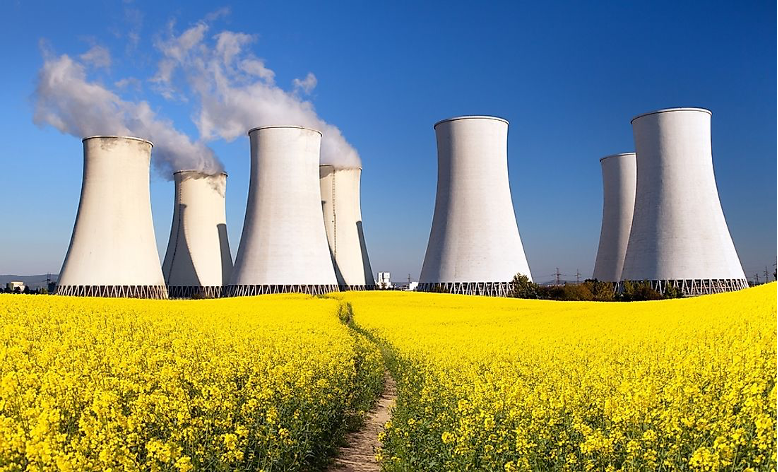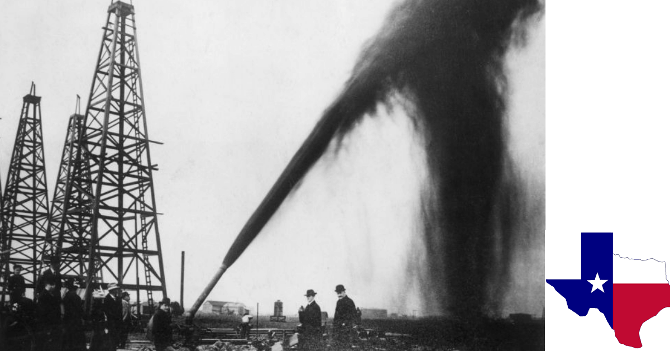The following is a collaboration between The Joule Thief Substack and Tuco’s Child’s Newsletter, with input from Gene Nelson, Ph.D. of the GreenNUKE Substack.
Energy density is a fundamental concept in the fields of energy and power generation
Above: Nuclear power plant in Slovakia.
Preface
Hello readers, we have returned with more fun and sharing of grounded 101 principles in the fields of energy and power generation for your reading pleasure. In the prior episode, the Joule-er’s Accountant, Part 1, K. T. Lynn, an energy industry insider, shined a light on Energy Return on Investment (EROI), a fundamental concept in the field of energy and power generation. In that article, K.T. also outlined how nuclear power is the King of EROI, and how other common energy sources pale in comparison.
As discussed in Part 1, EROI is closely related to the concept of energy density, in particular the energy density of fuels, materials, devices, and systems. A rule of thumb is that the more energy dense a fuel is, the greater the EROI is.
Simply, energy density is the amount of energy that a given mass or volume contains. The units of energy density for mass are megajoules/kilogram (MJ/kg), and megajoules liter or cubic meter (MJ/m3). Given this, it is easy to grasp that the higher the energy density of a fuel, material, or a battery device is, the greater the amount of energy it has stored, and possibly available for use.
A material or a device or a system that has a high energy density does not necessarily reveal how quickly or efficiently the energy can be used. This is described by a material’s or device’s power density, which is the rate at which its energy can be used to do some work. One can see that the most useful material or device has a high energy density, a high-power density, and good transportability. This is precisely why fossil fuels are so useful and have revolutionized all aspects of our modern world from fuels to materials to pharmaceuticals.
Above: gusher from the ‘ol days in TX. We depend on our high energy density oil resources for everything in our modern world. Nuclear power will help us preserve this precious resource.
It is also important to differentiate between mass energy density vs. volumetric energy density, so an apples-to-apples comparison can be made between fuels. One can be easily tricked by the pro-hydrogen crowd regarding energy density in these comparisons. This is because hydrogen is a gas under standard conditions and must be compressed, cooled and liquified to make it into a liquid with a defined mass in kg, which is a useful form of hydrogen. To be sure, one cannot usefully compare the energy densities of materials unless they are expressed in identical units.
Energy Density and Energy Released to do Useful Things
A material or device releases energy in 4 typical ways: nuclear, chemical, electrochemical and electrical. Energy dense materials are the most useful, because they contain more energy stored in a given mass (Kg) and thus can do more potential work than lower energy density materials. To illustrate the relative energy densities of typical combustible materials in comparison to a lithium battery, we present the graph below.
Above: the energy density of common oxidizable or combustible materials in comparison to a lithium battery device. Source: The Geography of Transport Systems.
Using the graph above, we can compare and contrast a car burning gasoline (ICE) vs. an electric vehicle (EV) powered by a lithium battery. Gasoline has an energy density of about 45 MJ/Kg vs. an EV lithium battery that has only about 0.5-1 MJ/kg. Because the energy density of a lithium battery is so low, an EV is commonly much heavier than an ICE vehicle, sometimes by up to 1000 lbs or more, in order to get any useful range.
Importantly, and also in contrast to EVs, ICE powered vehicles carry a high energy density fuel onboard, which is ultimately much more efficient in comparison to the long chain of events and losses realized in charging an EV – that is, starting with electrons generated at a remote power plant, typically fueled by coal, followed by transmission down lossy power lines to a charger, and then the charging of the battery in-place. We further note that charging an EV battery requires power, as charging is a non-spontaneous uphill process. Ultimately, despite EVs having 90 % efficient electric motors, modern ICE vehicles are still about 30 % more efficient than EVs, as we have previously reported in EViscerated: ICE Vehicles are More Efficient than EVs.
A word about hydrogen: at 143.0 MJ/kg, hydrogen has the highest energy density of common fuels by weight in its liquid state. Unfortunately, at 0.0108 MJ/L, gaseous H2 also has the lowest energy density by volume (over 3000 times smaller than gasoline). Hydrogen is exceedingly energy intensive to obtain, most commonly from hydrocarbons, and then to isolate, store, transport and distribute.
In fact, it takes more energy to produce and store 1 Kg of hydrogen than the energy 1 Kg of hydrogen contains (143.0 MJ/kg). This is because hydrogen is derived primarily from hydrocarbons in “reforming” processes, and must be transported, stored and distributed in a safe and efficient ways, which require expensive engineering. To illustrate, to maintain hydrogen in a liquid state, it is necessary to use very low temperatures (−253.15°C), and for this reason, storage tanks must be constantly cooled and thermally insulated from the environment, and large amounts of fuel is consumed for cooling.
The Great King of Energy Density
Above: the good ‘ol days and perhaps the future.
Nuclear power is the King of EROI and is also the King of Energy Density. There is no contest when it comes to splitting the atom, as illustrated by Einstein’s energy and mass equivalence equation E=mc2, which says that you can get a s-ton of energy (E) out of a knat’s ass of matter (m) multiplied by the speed of light squared (c2).
The energy density from the nuclear fuel uranium is a very big number because the c term or speed of light (300,000,000 meters per second) is multiplied by itself (squared) which is a very big number: 8.98755179 × 1016 m2/s2 (That’s 8.9 with 16 zeros behind it.). One can now see that the E term in E=mc2 blows up when some mass is multiplied by 8.98755179 × 1016 m2/s2.
Above: when a uranium atom is split by neutron absorption, a large amount of energy is released, along with a barium atom, a krypton atom and more neutrons. The neutrons go on to split other uranium atoms in a chain reaction.
To illustrate how large the E term in E=mc2 can be when splitting the atom at a nuclear plant, I defer to Nick Touran, a nuclear engineer who has conveniently calculated the energy density of common nuclear fuels per below:
Above: energy densities of nuclear fuels using a 10 gram pellet. Source: whatisnuclear.
To quote: energy density is like the miles-per-gallon rating of a power plant. It measures how much energy is released (in megajoules) given a certain mass of fuel (in kilograms). The energy density of nuclear fuel is about 2 million times higher than that of any chemical (like fossil fuel, biofuel, or batteries).
Some Graphic Examples of Nuclear Fuel Energy Density and Benefits
Above: a 10 gram pellet of uranium oxide can substitute for carbon fuels, and thus free up hydrocarbons for better uses. Sources: DOE and Elements.
Above: diffuse energy generators such as wind turbines and solar panels cannot compete with nuclear or fossil fuels. Source: DOE.
Above: because nuclear fuels have such a high energy density, the nuclear plant footprint is far less than that needed for solar and wind.
A Shocking Fact about our Energy Reality: Renewables are Unsustainable
Yes, it is true folks. There really is no such thing as renewable or sustainable, the most abused words in the field of “green energy”. How can this be? Haven’t they been telling us that this is true?
The answers are quite simple and in plain sight, but can be hidden from view. In simple terms, The Second Law of Thermodynamics teaches:
1. Almost all processes are irreversible.
2. Almost all processes create disorder and heat.
3. We use energy to order everything in our world, this creates disorder somewhere else.
4. Heat never flows spontaneously from a colder object to a hotter object.
A fun example: you order 5 red marbles and 5 blue marbles on a table. Then in a fit after watching too much news, you sweep them onto the floor. Do the marbles spontaneously re-order into 5 red and 5 blue? Highly unlikely.
In another example, shown graphically below, we show how dilute CO2 gas naturally spreads out to fill a space and is naturally disordered.
Above: air contains 400 ppm CO₂ (red), and is naturally well mixed and bouncing around with thermal energy and vibrating (high entropy). CO₂ and other gases expand to fill a vacuum or empty space, and maximize their degrees of freedom and thus disorder.
Bonus Section: Edward Teller’s Thoughts on Nuclear Power
As a parting note, we’ll leave you with this excerpt from a prescient letter written by the legendary nuclear physicist Edward Teller to the Congressional Record of Remarks regarding the Three Mile Island incident (Courtesy of Gene Nelson, Ph.D.)
I WAS THE ONLY VICTIM OF THREE-MILE ISLAND - Edward Teller, Ph.D. HON. LARRY McDONALD OF GEORGIA IN THE HOUSE OF REPRESENTATIVES
Tuesday, December 18, 1979
I have worked on the hydrogen bomb and on the safety of nuclear reactors. I did both for the same reasons. Both are needed for the survival of a free society. If we are to avoid war, we must be strong and we must help to generate the progress that makes it possible for all nations to grow and prosper.
And what is the greatest present-day threat to the prosperity and even the survival of nations? A lack of energy. Both developed and developing nations are threatened.
The citizens of the United States have just begun to recognize the impact of the world's growing energy shortage. Gasoline lines, electrical brownouts and higher prices are minor irritants. They are nothing compared to what may lie ahead. In a struggle for survival. politics, law, religion and even humanity may be forgotten. When the objective is to stay alive. the end may seem to justify the means. In that event, the world may indeed return to the "simpler" life of the past, but millions of us will not be alive to discover its disadvantages.
When our existence is at stake, we cannot afford to turn our backs on any source of energy. We need them all. When It comes to generating electricity, we especially need nuclear power. Contrary to what Nader and Fonda. and their friends such as Sternglass. Wald and Kendall, would have you believe. nuclear power is the safest. cleanest way to generate large amounts of electrical power. This is not merely my opinion—it is a fact. Due to the lessons learned at Three Mile Island. the nuclear way of generating electricity will be made even safer.
I believe that we have reached a turning point in history. The anti-nuclear propaganda we are hearing puts democracy to a severe test. Unless the political trend toward energy development in this country changes rapidly. there may not be a United States in the twenty-first century.
Perhaps we ought to heed Teller’s words.
















Nuclear energy never ceases to amaze. Thank you!
Fantastic article. I loved the animation of CO2 within the atmosphere. I have often thought that the best way to get people to understand that the difference between 400ppm and 350ppm, where we were prior to the hysteria forming, would be to have two of those animations side by side and unlabeled and see if people can tell the difference. given CO2 is a trace element in the atmosphere, it seems the first fallacy is that a small change will have a huge impact as decried.
The other thing you don't mention in this article is the fact that we are looking at this from a developed world perspective. the 7 billion people on earth who are energy poor don't care at all about CO2 and care only about access to energy on a regular basis, which is yet another reason that nuclear is the way to go.